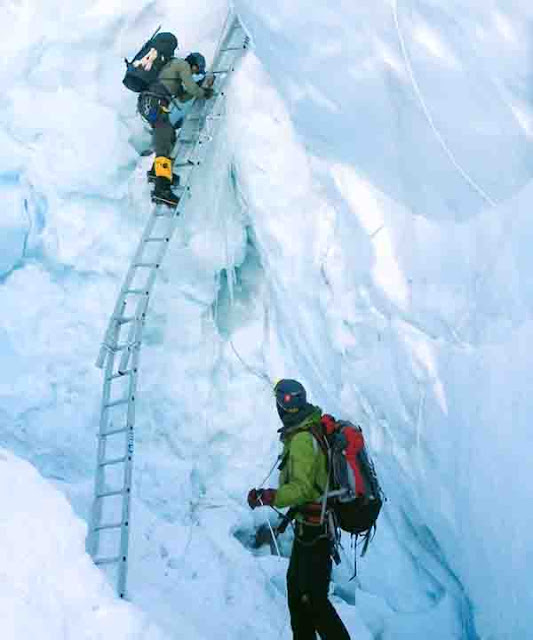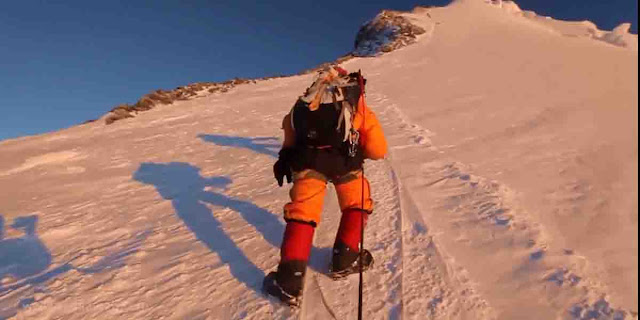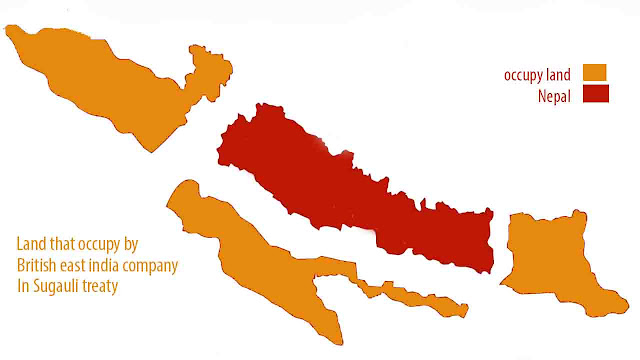Climbing mountains provides great life lessons and achievement for Sherpa, you may wonder why Sherpas are helpful in climbing expedition. Sherpa is honestly the biggest human being on the planet and without it, there would be no peak summits.
When you are the tallest, the deepest, the tallest, the fastest, the strongest, then people are affected by anything in the world. It is not a technical mountain, it is just a big mountain.
You are in the Himalayas, in the mountains, you are far away from help. You know, everyone in the world has a lifeguard. Most mountains in the world have mountain rescue.
So effectively, if you get into trouble on the mountain, there is little medical help and that is why there are so many fatalities and so many injuries, especially on Everest and in the region.
In this site, we are going to learn how Sherpa helps people to climb a mountain of height, how they risk their lives, what is the one that needs to climb a mountain.
Mountaineering expedition, Sherpa's life behind mountain climbing.
Who are the Sherpa people
It is an ethnic group of people of Nepal and they have migrated from Tibet. Their name means "Eastern", so they came to the mountains and settled the higher regions of the Himalayas.
They usually lived in high altitude areas which are a part of that area in the Khumb Valley and other high areas of Nepal.
They have their own culture and tradition which is similar to Tibet culture, they have their own food. Mostly nowadays they engage in the guidance of the mountain.
Is sherpa is a job title?
First of all, I have to clarify that Sherpa is not a job title, it is not a position like I have a Sherpa, so I work in the mountains and I lift heavy loads,
Basically, a climber can get the job of climbing a mountain to climb parties carrying weights and equipment.
But Sherpa may also have a job as a dentist or pilot or work at a tea shop or shop in Kathmandu. So Sherpa is not a job title.
Problem in mountain expedition for western people
As you know there are many risks to climb Nepali mountain. If you are ready for a mountain expedition then there are many things to remember
It depends on which mountain you climb. Going to the mountains in the Himalayas can be very difficult
Snow is hard, some stones are hard, rocks that are not rocky or icy or high in height are less hard.
Oxygen (breath)
While climbing at a height, you will feel that you are short of breath. Sure, you are walking and climbing with a lot of energy, but lack of breath is also due to low oxygen content.
When you talk about climbing a mountain, the oxygen level decreases drastically. a lot of risks comes.
Transfer materials or things
Usually, trekking and climbing are a minimum of 5 days or more than 5 days and a maximum of 30 days or more than 30 days, depending on the distance of roots.
Between those days you have to move all the necessary things and materials like food, tent, oxygen, equipment, and other essential things.
To move the material you either have to carry it yourself or you can keep a Sherpa as a porter which is expensive and comfortable.
guidance
Climbing a mountain without a sherpa guide is a challenge, never think of climbing there are many trekking agencies that provide guides.
It is very difficult to choose the right guide. Sometimes you can get a fresher guide that has not done any practical.
You have to get a question about your guidance so that you can complete the task safely.
Health
Your health should be mentally and physically good while climbing the mountain, you have reached 2, 3 days before trekking so that you can accumulate while trekking.
If you get into trouble on the mountain, there is little medical help and that is why there are so many fatalities and so many injuries, especially on Everest and in this region.
How sherpas helpful in climbing expedition
Nepal is a beautiful country with a Himalayan wall and the highest mountain in the world and, as a result, it brings people from all over the world.
It is a dangerous place, you are in the Himalayas, in the mountains, you are a long way to help, but here is the Sherpa who helps in your expedition.
Sherpa is the cradle of the Himalayas, where they are associated with mountain climbing, being a mountaineer, it has now become a Sherpa culture.
It is about life and death that shows how Sherpas commit themselves to save their client's life and thus endangering their own lives.
Sherpa prepares a path for the expedition, equipped with ladders and ropes, which they pursue in a maze of snow.
The snowfall in the Everest doctor's foot continued as doctors looked for a safe passage due to the danger of falling into hidden areas
If you are in Everest
Taking care of the oxygen bottle, food, water, and raw chicken and other equipment that has to carry them all is very hard work, it is not easy. It looks easy but it is not easy.
The energy of hard work for everything fixed by rope to cross the snow valley and set up camp at high altitude.
Apart from carrying these heavy loads above the base camp, one of their main tasks is essentially the rearing of human cattle.
Crossing the valley
The most dangerous thing while climbing a mountain is to cross the glacier valley in this situation. Icefall doctor is helpful, rope expert, and sherpa guide.
If the valley is large then sometimes you have to add 2 or 3 ladder Sherpa risks to go first while walking up the ladder is a heartbreaking movement. The depth of the valley is 20 feet to 25 feet or more.
Sloping area
In the sloping area, rope experts help you steady how to tie a rope so that you feel comfortable.
Sometimes you are in the area with a stand-in slope because nowadays in Everest there are a lot of people who want to climb Everest, so you have to wait for a traffic jam.
Cookman
When you arrive at the base camp, Cookman must be very tired while cooking for you.
Behind the mountain expedition
For climbers who dream of the summit in Nepal have gathered from every corner of the world.
Members of the expedition receive bags that they can use to pack their personal contents and give to Sherpa for transport.
There are many facts behind the mountain expedition in Nepal
Sherpa's life
As you know how dangerous the mountain expedition is. Many Sherpas do not want their son to work in the mountain expedition. Many Sherpas are interested in climbing one for many and very few.
Many Sherpas still suffer from the fact that he never received an education, he has to bear the responsibility for the family as soon as he can afford it.
He earns from campaigns that allow him to send his daughters to the schools in the city area, they hope that their children's lives will improve and perhaps we will be able to go abroad as well.
Many of these people don't really want to do this job. They do this because a river of money flows from their villages and the only way to get it is to jump to Everest and follow it.
Fatal while climbing
Due to inclement weather, avalanche-prone areas, and steep climbing slopes, the main reasons are exposure to cold.
There are many technically difficult sections on the route, sometimes you have to walk under unbalanced ice walls and sera that can come down at any time.
There are many avalanche prone sections on the higher area, some difficult sections where many climbers have died trying to cross them
There is a rock climbing section that can fall at any time. The climber has to walk. Some of the most rare in the Nepal Mountains.
s.no | Mountain | location | Height | Fatale rate |
1 | Mt. Everest | Nepal and china | 8848m | 6.0% |
2 | Cho Oyu | " | 8201m | 1.6% |
3 | Makalu | " | 8485m | major |
4 | Mt.Dhaulagiri | Central Nepal | 8167m | 32% |
5 | Mt. Annapurna 1 | Gandaki zone | 8091m | 38% |
6 | Kangchenjunga | Nepal and India | 8586m | 22% |
7 | Manaslu | Gorkha | 8156m | 7% |
8 | Lhotse | Tibet and Nepal | 8516m | 3% |
Sherpa Supernatural
Sherpas have most evolved to become supernatural climbers famous for their skills as mountaineers on the Himalayan peaks.
The sherpas hold the record for the fastest and most ascending. We have seen that Sherpa people and other related groups in Tibet have lower red blood cell counts.
Compared to European or other Terai people, which means they have less oxygen in our blood than we do.
It is suspected that Sherpa cells were somehow used so that less oxygen was available to them.
As expected doctors found Sherpa's mitochondria more efficient in using oxygen.
Sherpa muscle, energy reserves actually increased at altitude despite lack of oxygen.
internal link
Sherpa holding record
Yes, there are many sherpas who hold the record in mountain expedition. how many times sherpa climb Everest?
 |
kami Rita sherpa
|
sherpas helpful in climbing expedition, here we going to look at some sherpa that holds the record.
S.no | Name | Record |
1 | Tenzing Norgay Sherpa | First Nepal man to reach on Everest in 1953 |
2 | Pemba Dorje Sherpa | Speed climber ( Duration 8hr 10min on Everest) ( In 10 days 3 times attempt on Everest) |
3 | Phurba Tashi sherpa | 21 times on Everest |
4 | Apa Sherpa | “ |
5 | Lakhapa Sherpa | Nepal first lady to climb on Everest 9 times |
6 | Nima Jangmu sherpa | First Nepali women climb three highest peaks in a single season. |
7 | Kami Rita Sherpa | 24 times attempt on Everest |
8 | Pasang Lhamu Sherpa | First Nepali lady to climb on Everest in1993 |
The conclusion
Do not underestimate Sherpa work.
This kind of work is a climb. Sherpa is more dangerous than a pedestrian in Iraq. Being an Alaska Bush pilot is dangerous instead
Sherpa is the backbone of any Himalayan expedition, it is impossible to imagine anyone without Sherpa's expert assistance
They make it possible that it has been suggested that genetically they have more lung capacity than normal people, with this type of ability being helpful in climbing the mountain expedition.
This may help explain their ability to climb to great heights and the fact that most Sherpas are living breathers and eat above 10,000 feet.
This is due to the Sherpa climbers and the climbers of the rescue team can reach the summit and return alive in this way Sherpas helpful in climbing expedition.























